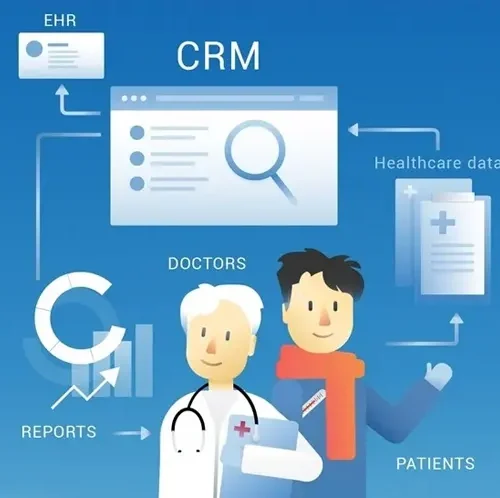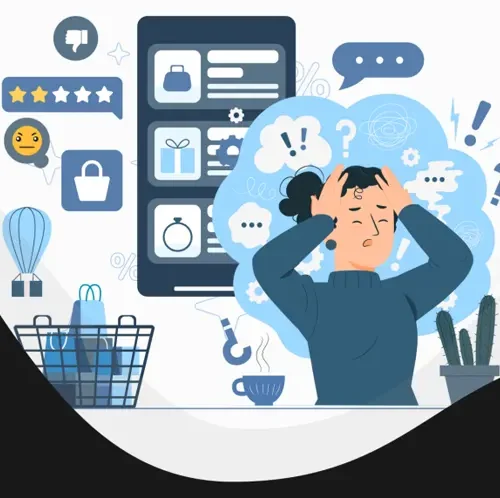An eCommerce website is the best way to present(showcase) your products under a single platform and sell to your large prospects.
eCommerce platforms (websites) are so much more accessible to use than physical stores, and they can help you reach numerous people with fewer resources.
When you’re an online retailer, your business is on the internet. That’s why it’s so important to have a website that makes it easy for your customers to find and buy what you have for sale.
But building an eCommerce website can sound like a lot of work! Right? No, it’s not, though. In fact, it’s simpler than you could ever imagine.
What allows some online retailers to succeed while others bite the dust? It’s not complicated: in e-Commerce, the most important things are a good-looking, easy-to-navigate website, and a well-thought-out business strategy. Take the time to create both of these things—and your chances of prosperity are already much greater than your competitors.
What makes some e-commerce businesses succeed while others breathe their last? It’s not at all perplexing. In e-Commerce, the most important aspects should keep remembered, it functions well, adds value to your business, easy-to-navigate, fast-loading time website, and has a pretense with business strategy.
Here are several advantages of eCommerce websites WordPress CMS and you can create intimacy or engage with your audience in a more advanced way. Here you get a chance to minimize shilly-shallying presence, experiences, and much more. That can ensure a greater possibility of removing your competitors. With this Step-by-Step Guide, you can build, operate and control your own website so easily.

WordPress is extremely famous compared to other CMS out there. Its functionality is awesome, and you can use it to build an eCommerce website pretty easily. The problem is that it’s difficult to learn, unlike, a programming language like PHP or Java. This is the reason Maven Technology is the best eCommerce Website development company has built this article to show how we build eCommerce sites with WordPress.
Step: 1) Choose the ideal domain name and hosting service:
A domain name is a unique name that identifies your website on the internet or we referred as the website’s exclusive address. It is a combination of letters, numbers, and hyphens separated by periods. Ours is ‘maventechie.com‘, for example. A domain name is required for any website to be visible on the internet.
Choosing your domain name can’t be difficult. It should be short, memorable, easy to spell, and should not be taken by someone else before you do.
A hosting service provides you with a space to store your website files and make them available to the public via the internet. There are many hosting services available in the market, but choosing one can be hard because there are many factors involved in selecting one. Many hosting services offer different levels of service at different prices, so it’s important to choose one that fits your needs and budget.
Step: 2) Sign up with a dedicated hosting provider
Congratulations! Here is your second step.
Now it’s time to choose a host for your e-commerce website. Let’s dig in deeper.
Web hosting is certainly referred to as just buying a place on the internet where your website going live. It’s like an address for where your business should be – except it doesn’t actually exist in reality!
There are two types of hosts: shared and dedicated. With a shared host, your website is on the same server as several other websites – but it’s usually cheaper.
However, when it comes to security and privacy, shared hosting doesn’t provide enough protection for your site, it poses lots of vulnerabilities to your site. Because you’re dealing with people’s personal data like credit card details, personal contact details, etc. So we recommend skipping shared hosting altogether and going with a dedicated host instead. With a dedicated host, your site will have its own space on an entirely separate server than any other websites on the same server – so you can be sure there’s no chance of anyone else getting hacked or taking over your domain name!
Step: 3) Going for WordPress Installations:
The TWO-way process to install WordPress
If you’ve got a question about WordPress Installations Process, we’ve got the answer.
I) One-click install:
When you sign up for a one-click install, you register your domain name and get your WordPress site hosted by the same provider. WordPress recommends your host supports PHP 7, MySQL v5.6+ or MariaDB v10.0+, and HTTPS.
WordPress is also equipped with its trusted hosting providers, which can assist the installation process easier. The recommended host service was Bluehost, SiteGround, Pressable, DreamHost, and Flywheel.
II) Manual install:
If you’re an advanced user looking for something more hands-on, then go with the manual install option—we’ll walk you through each step of setting up your WordPress site on your own server.
Here you’ll need an FTP client (like FileZilla), set up a database by using cPanel, and be ready to access your web server. The only thing you need is FTP access to transfer files between your server and the new platform’s installation folder(s).
Step: 4) Time to get an eCommerce Website Plugin:
The first thing you’ll need to do is make sure your site is ready for eCommerce website building by the most popular WordPress plugin for adding e-commerce functionality. To do this, you’ll need to install an eCommerce plugin. There is no strict principle to adding WordPress eCommerce elements. To add more of this functionality to your eCommerce website, here you need to install an eCommerce plugin individually for your eCommerce website.
- WooCommerce is the one to beat. It has a 4.6/5 rating from over 21% of users on the top 1 million sites. It’s fine to express its elegant and popular plugin, and it’s obvious to use in your WordPress eCommerce Website development projects. It offers an open-source platform and is free.
- Easy Digital Downloads (EDD) are the second most popular WordPress plugin
- Cart66 Cloud has the built-in best e-commerce WordPress plugin. The most added unique feature is that it offers a marketplace of vendors and a free core plugin, but different unique features come under the premium version.
- Ecwid Ecommerce possesses excellent ratings in 2022. It will be functional for any website you’d like. It offers different built-in tools, mobile responsive shopping carts, and a powerful free plan gives you to operate like a pro.
- WP EasyCart is appropriate for small business owners and non-developers. Offers easy sync with email marketing integration with MailChimp. Similarly, easily integrate with TaxCloud and ShipStation.
But how to configure it?
To follow this process, installation and configuration include:
- Install and Activate the eCommerce website plugin
- Put business details
- Choose payment options/ payment gateway
- Secure shipping options
- Choose a complementary WordPress theme
- Activate automate taxes
And that’s the primary configuration arranged! Now, the time has come to add your products.
Step: 5) Select a theme:
WordPress is a great platform for creating eCommerce websites. It’s not just the ease of use and flexibility that makes it so popular, but also the fact that you can use it to create an online store.
The best way to get started with a WordPress site is to choose a template that fits your requirements and is easy to use. You can find many free themes in the theme directory, which you can access through your dashboard.
WordPress Theme selections will define the basic design of your website. These customizable WordPress Themes can be editable and designed like the original.
The best way to get started with a WordPress site is to choose a template that fits your requirements and is easy to use. You can find many free themes in the theme directory, which you can access through your dashboard.
You can also try out premium templates from third-party sites. These often give your e-commerce site a professional look and offer much more flexibility than free templates.
Step: 6) Tips to upload your products on your WordPress eCommerce website:
If you want an upload your products on your fully functional WordPress eCommerce website for yourself or any client, then follow these paths!
However, it’s no secret that an appealing storefront is one of the best ways to promote your business and attract customers. However, a poorly designed storefront can be a major drawback, discouraging potential customers from entering your store. Below are some tips for designing a quality storefront that will make your business stand out in the crowd.
a) Put the titles:
The product title should be listed in the product’s name in the front-end menus of your store, it should be SEO friendly, choose Yoast to get the best possible title, while the title should be prominent and is what users see when they click on one of these menu items.
b) Put appealing product descriptions:
Don’t copy from other manufacture’s websites copy. Be unique and appealing in describing product features. SEO-friendly long-tail keywords could get more search volumes than other people who don’t follow.
c) Use quality images of your products:
Use Square featured, high-quality product images to engage your audience and generate more attractions.
d) Categorise your products according to their nature and functionalities:
As the subheading suggests, categorize your products to facilitate your customers accordingly and help them find, navigate, and place orders among the best of their choice.
e) Put price respectively:
You can put the right price according to each product’s details. Make sure there are no hidden costs unless you will get lost in your brand’s reputation.
Step: 7) Payment gateway Segment:
Your eCommerce WordPress CMS site needs a means of receiving payments from customers. Don’t forget to sync with the most trusted payment gateway, like PayPal (the leading payment gateway) on your site. It is the last step in your eCommerce setup and will ensure that customers can pay for their orders. This has been the last step in your eCommerce website using WordPress CMS setup is to have a payment gateway to receive payments from customers.
Payment gateways are services that act as a middleman between you and your customer. They provide an interface for sending and receiving money from customers, and may also store payment information on behalf of merchants.
Your eCommerce site needs to be PCI compliant. This means you’ll need SSL certificates and a merchant account. Encrypting an SSL certificate can commonly be carried out through your hosting service provider for a fee.
EndNote:
Most people spend only a few seconds browsing through their favorite stores before deciding whether or not they want to buy something from them. So why not make those few seconds count? Make your products as engaging as possible by including compelling copy, striking photos, and unique descriptions—all of which will help sell more products!
A good-looking website is one of the most important factors in keeping customers happy when they shop online.
In addition to being easy to navigate, a well-designed e-commerce site should have many features that help potential customers find their products, integrate as per buyers’ specifications, and make the most of their experience flamboyantly.
Tired of searching for a WordPress eCommerce Website development company? Look no further, as Maven Technology has prepared a step-by-step guide on how to build an e-commerce website using WordPress. Our professional eCommerce Website developers are trained in building high-end multi-store eCommerce solution makers for the best price. Contact us for your next eCommerce website development project to add the best values to your online product selling business.
We talked about steps, they’re all relevant to the 2022 eCommerce Website development process, which we already covered to you through in this article. While these steps aren’t the only possible ones, we use these in our daily life to build an eCommerce website with WordPress Themes – WordPress Templates for our clients.




